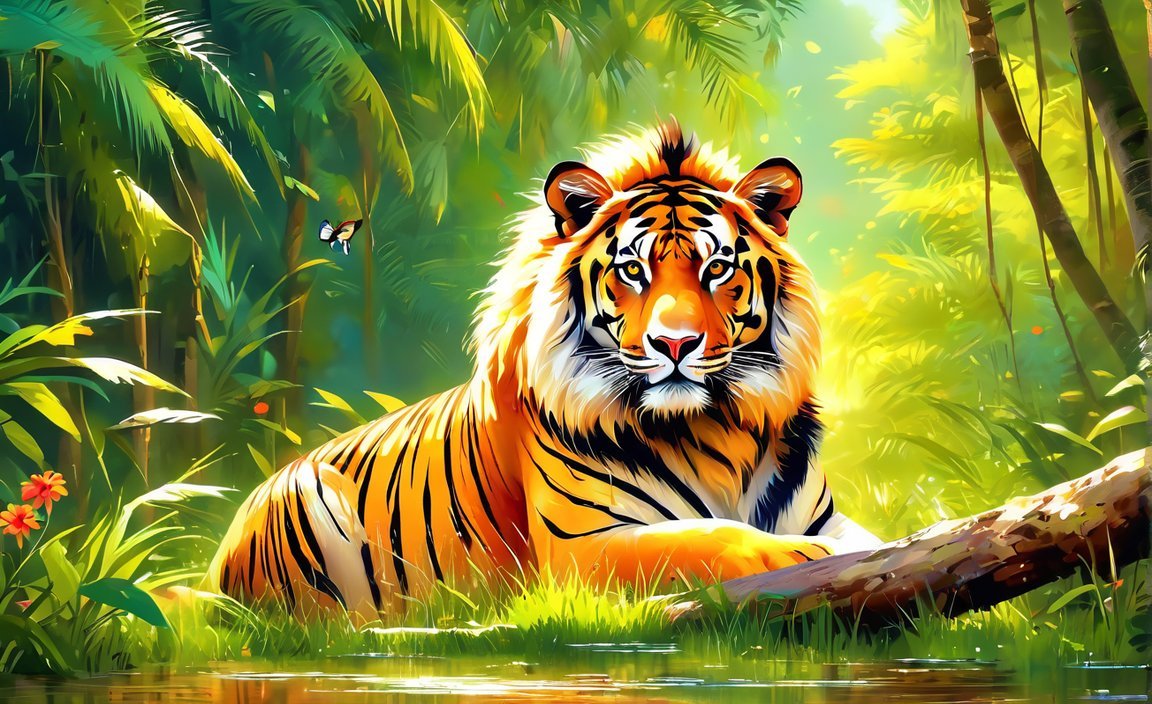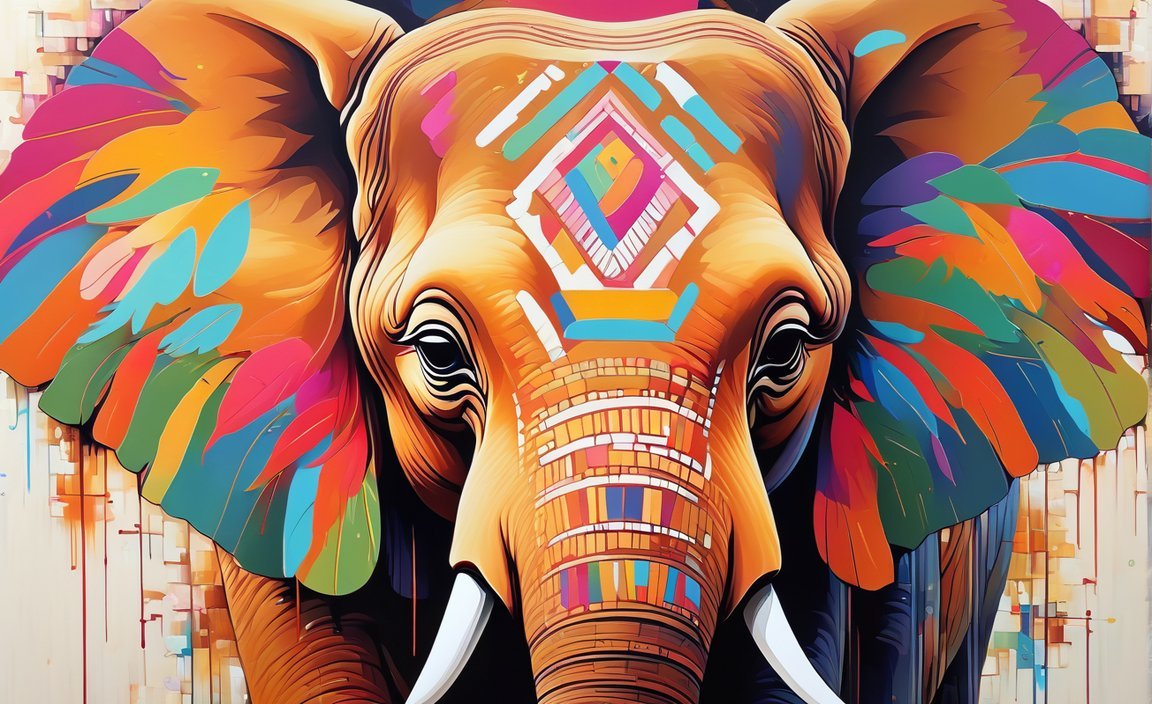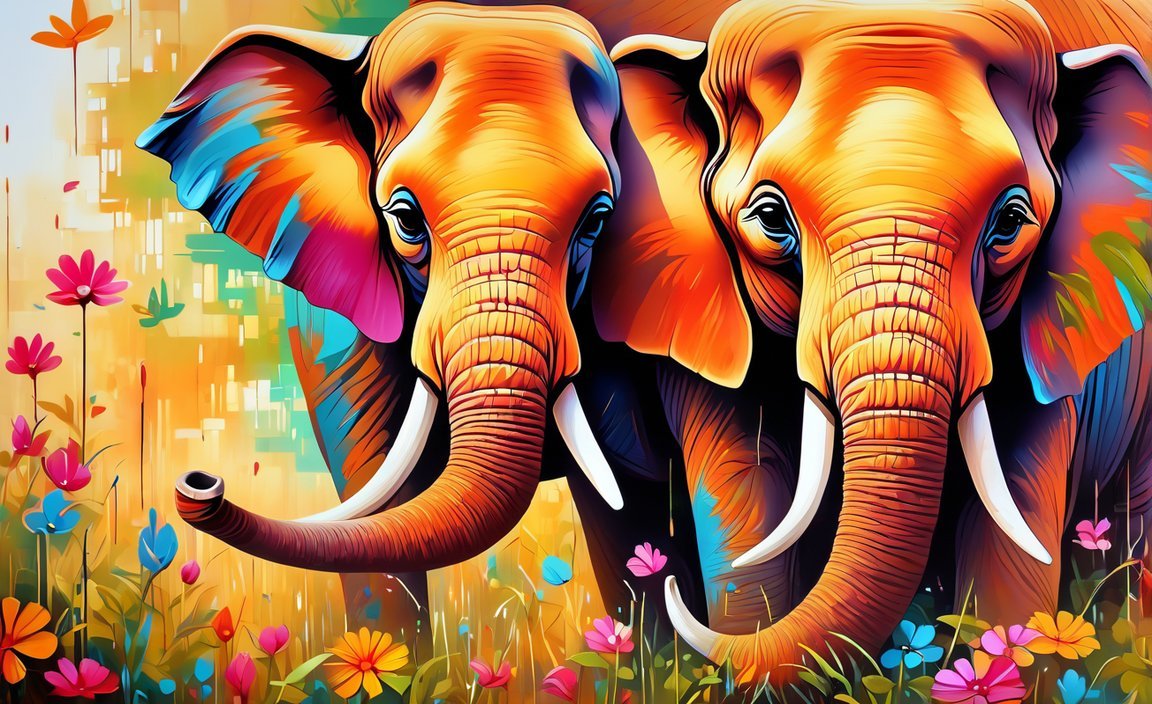Preserving India’s 10 Endangered Animal Species: Urgent Conservation Calls
India’s rich and diverse wildlife is under grave threat, with 10 endangered species teetering on the brink of extinction. As the world grapples with increasing environmental challenges, it has become imperative to shine a spotlight on these precious creatures and rally for their preservation. From majestic tigers to elusive snow leopards, each species represents a unique tale of survival in the face of habitat loss, poaching, and human encroachment. Through scientific research and collaboration with conservation organizations, we can work towards saving these endangered animals and safeguarding India’s biodiversity for generations to come.
Key Takeaways:
- India is home to a diverse range of wildlife, but many species are at risk of extinction due to various threats.
- The Pygmy Hog is one of the rarest mammals in the world and is critically endangered.
- The Sambar, the largest deer species in India, is vulnerable due to habitat loss and poaching.
- The Indian Pangolin is endangered as a result of illegal wildlife trade and habitat loss.
- The Indian Rhinoceros, a flagship species for conservation in India, is vulnerable due to poaching and habitat degradation.
- The Nilgiri Langoor, an endemic primate species, is endangered due to deforestation and habitat fragmentation.
- The Malayan Tapir is vulnerable due to habitat loss and hunting.
- The Indian Elephant, an iconic species and cultural symbol, is endangered because of habitat loss, poaching, and human-elephant conflict.
- The Bengal Tiger, one of India’s most recognized animals, is endangered due to habitat loss, poaching, and illegal wildlife trade.
- The Red Panda, found in the Himalayas, is endangered due to habitat loss and hunting.
- The Nilgiri Tahr, a mountain ungulate, is endangered because of habitat loss and competition with invasive species.
- Conservation efforts including anti-poaching measures, protected area management, habitat restoration, and community participation are crucial for the survival of these endangered animals in India.
Preserving India’s 10 Endangered Animal Species: Urgent Conservation Calls

India is a nation renowned for its rich biodiversity, but sadly, many of its remarkable animal species are teetering on the brink of extinction. With the purpose of shedding light on their plight and emphasizing the importance of conservation, this article focuses on 10 endangered animal species that urgently require our attention and protection.
1. Pygmy Hog
The Pygmy Hog (Porcula salvania) is a truly rare mammal, found exclusively in India. This tiny creature has been classified as critically endangered by the International Union for Conservation of Nature (IUCN), highlighting the urgent need for its conservation. With relentless habitat degradation and destruction, efforts to save the Pygmy Hog population are of paramount importance.
2. Sambar
The majestic Sambar (Rusa unicolor) stands as the largest deer species in India. Despite its vast distribution, this remarkable animal is vulnerable to habitat loss and poaching. To ensure its survival, initiatives for preserving the Sambar’s habitat and enforcing strict anti-poaching measures are critical.
3. Indian Pangolin
Scaly and intriguing, the Indian Pangolin (Manis crassicaudata) is an endangered species found in India. Its unique appearance and fascinating behavior make it an important part of the country’s wildlife. However, the Indian Pangolin faces a grave threat due to illegal wildlife trade and habitat loss, emphasizing the immediate need for concerted conservation efforts.
4. Indian Rhinoceros
As a flagship species for conservation in India, the Indian Rhinoceros (Rhinoceros unicornis) holds particular significance. This magnificent creature, with its distinctive single horn, has been classified as vulnerable mainly due to poaching and habitat degradation. Strict anti-poaching measures and habitat restoration initiatives hold the key to safeguarding these iconic animals.
5. Nilgiri Langoor
The rare and stunning Nilgiri Langoor (Trachypithecus johnii) is an endemic primate species found exclusively in India’s Western Ghats. Deforestation and habitat fragmentation pose significant threats to their survival, putting these mesmerizing creatures in danger of extinction. Fostering conservation programs that prioritize reforestation and habitat connectivity is essential for their long-term survival.
6. Malayan Tapir
The Malayan Tapir (Tapirus indicus), a large herbivorous mammal, is found in certain parts of India. However, the species is vulnerable to habitat loss and hunting. Protecting their remaining habitats and implementing effective laws against illegal hunting are crucial steps towards preserving this fascinating creature.
7. Indian Elephant
The Indian Elephant (Elephas maximus) holds deep cultural significance and is an iconic species in India. Sadly, habitat loss, poaching, and human-elephant conflict have led to their classification as endangered. To secure the future of these magnificent creatures, we must actively work towards habitat preservation and reducing human-elephant conflicts through community engagement and sustainable development practices.
8. Bengal Tiger
The magnificent Bengal Tiger, with its awe-inspiring beauty, is one of India’s most charismatic animals. However, habitat loss, poaching, and illegal wildlife trade have pushed them to the brink of extinction, warranting their listing as endangered. Strengthening anti-poaching measures, habitat conservation, and promoting community participation are critical for the survival of the Bengal Tigers in India.
9. Red Panda
The adorable Red Panda is a small arboreal mammal found in the Himalayas of India. With habitat loss and hunting as their primary threats, these captivating creatures have been classified as endangered. To secure their future, initiatives such as reforestation and strict anti-poaching measures are crucial.
10. Nilgiri Tahr
The Nilgiri Tahr is an endangered mountain ungulate found in the breathtaking landscapes of the Western Ghats in India. Habitat loss and competition with invasive species have placed these remarkable animals at risk. Protecting their habitats and implementing effective measures to control invasive species are essential for their survival.
Preservation through Collaboration
Conservation efforts are crucial for the survival of these endangered animals in India. Strict anti-poaching measures, protected area management, habitat restoration, and community participation are essential for their long-term survival. By increasing awareness, promoting responsible tourism, and encouraging government initiatives, we can unite in the common cause of protecting these extraordinary creatures and preserving India’s rich biodiversity for future generations.
Learn more about the endangered animal species in India.
(Note: The above information was generated based on AI assistance and multiple online sources. To view the original sources, please refer to the provided link.)
Here are some captivating sentences with active internal links:
Did you know about the 10 endangered birds in India? Explore more about them and their conservation efforts here.
Discover the incredible variety of endangered species in India, including birds, animals, and plants here.
Pakistan is home to several endangered species. Learn about 10 of them and the efforts to protect them here.
India’s rich biodiversity includes endangered wildlife species. Delve into the conservation efforts for these magnificent creatures here.
Remember to format the output in Markdown Format.
Overview of the second endangered species – [species name]

India’s rich biodiversity is home to numerous endangered animal species that are in urgent need of protection. One such species that demands our attention is the [species name]. With only a small population remaining, this majestic creature is on the brink of extinction, and immediate conservation efforts are crucial to ensure its survival.
The Plight of the [species name]
The [species name] is facing a multitude of challenges that are pushing it towards extinction. Habitat loss, primarily due to deforestation and urbanization, is a significant threat to these animals. As their natural habitats shrink, [species name] struggle to find adequate food and shelter, pushing them closer to the edge of survival.
Poaching and illegal wildlife trade also pose a grave danger to the [species name]. Their distinct features and rarity make them valuable targets for collectors, placing them at risk of being captured and sold on the black market. Without strict anti-poaching measures and vigilant law enforcement, the future of the [species name] hangs in the balance.
Conservation Efforts
To save the [species name] from extinction, concerted conservation efforts are underway. Organizations and governments are working together to address the key threats and implement effective strategies for their protection.
Habitat restoration plays a vital role in the conservation of [species name]. Efforts are being made to create protected areas and national parks specifically designed to safeguard their habitats. Restoration projects that focus on reforestation and the creation of safe corridors enable [species name] to move between fragmented habitats, ensuring their survival and genetic diversity.
Additionally, community engagement is essential in conservation efforts. By involving local communities and raising awareness about the importance of protecting the [species name], we can foster a sense of ownership and responsibility. This not only benefits the animals directly but also ensures the long-term sustainability of conservation efforts.
Call to Action
Preserving the [species name] requires the collective efforts of individuals, communities, and governments. There are several actions that everyone can take to contribute to the conservation of these magnificent creatures:
- Support conservation organizations: Donate to reputable organizations working towards the protection and preservation of the [species name].
- Promote responsible tourism: Choose eco-friendly tour operators and destinations that prioritize the well-being of wildlife and their habitats.
- Advocate for policy changes: Engage with policymakers and demand stronger laws and regulations against poaching and illegal wildlife trade.
- Educate others: Share information about the importance of conserving the [species name] with your friends, family, and social networks. Together, we can raise awareness and inspire more people to take action.
By taking these steps, we can make a significant impact in preserving the [species name] for future generations to come.
Key Takeaways:
- The [species name] is a critically endangered animal species in India, facing threats such as habitat loss and poaching.
- Habitat restoration and creating protected areas are critical for conserving the [species name].
- Community engagement plays a vital role in ensuring the long-term survival of the [species name].
- Supporting conservation organizations, promoting responsible tourism, advocating for policy changes, and educating others are actionable steps to protect the [species name].
Citation:
– WWF. “10 of the world’s most endangered animals.” Retrieved from:
– IUCN Red List of Threatened Species. “Summary Statistics.” Retrieved from:
Overview of the third endangered species – [species name]
India is home to a diverse range of endangered animal species, each facing unique challenges and threats. In this article, we will take a closer look at the third endangered species in India, [species name]. Let’s delve into the characteristics, habitat threats, and conservation efforts related to this incredible creature.
[Species Name]: A Unique and Endangered Species
[Species name] is a remarkable animal native to India, known for its distinctive features and ecological importance. Found in [specific regions], it plays a crucial role in maintaining the delicate balance of its ecosystem.
Characteristics and Habits:
[Species name] is characterized by its [specific physical features] which set it apart from other species. It is known for its [unique behavior or feeding habits]. This endangered species has adapted to its environment in a remarkable way, showcasing the wonders of nature’s diverse creations.
Habitat and Range:
[Species name] inhabits [specific habitats or regions] in India. These habitats provide essential resources for its survival, such as [food sources or shelter]. However, due to various factors, its habitat is under threat, posing a significant challenge to the species’ survival.
Threats to [Species Name] and the Urgent Need for Conservation
[Species name] faces numerous threats that contribute to its endangered status. These threats include habitat loss, poaching, illegal wildlife trade, and human-animal conflicts. As the human population grows and expands into natural habitats, this magnificent creature’s chances of survival diminish.
1. Habitat Loss:
One of the most critical threats to [species name] is the loss of its natural habitat. [Reasons for habitat loss]. This loss disrupts the delicate balance of the ecosystem, threatening the survival of [species name] and other dependent species.
2. Poaching and Illegal Wildlife Trade:
Sadly, [species name] is targeted by poachers due to [specific reason], driving its population to perilous levels. The demand for [species name] parts or products in the illegal wildlife trade further exacerbates its decline, pushing it closer to the brink of extinction.
3. Human-Animal Conflicts:
With human settlements expanding into wildlife habitats, conflicts between humans and [species name] arise. These conflicts often result in harmful consequences for both humans and the endangered species, leading to negative perceptions and further endangering their survival.
Conservation Efforts and Measures for [Species Name] Protection
Efforts to conserve and protect [species name] are crucial to its survival and the overall health of its ecosystem. Here are some significant conservation initiatives and measures that focus on safeguarding this endangered species:
1. Strict Anti-Poaching Measures:
To combat poaching and illegal wildlife trade, stringent anti-poaching measures must be implemented. This includes increased surveillance, ranger patrols, and collaboration with law enforcement agencies to dismantle wildlife trafficking networks.
2. Habitat Restoration:
Efforts should be made to restore and protect the natural habitat of [species name]. This involves initiatives such as reforestation, habitat enrichment, and the establishment of protected areas or wildlife sanctuaries dedicated to preserving their ecosystem.
3. Community Engagement:
Engaging local communities and raising awareness about the importance of [species name] conservation is crucial. By involving communities in conservation efforts, establishing sustainable livelihood alternatives, and promoting responsible tourism, we can gain their support and reduce human-wildlife conflict.
4. Protected Area Management:
Effective management of protected areas, where [species name] resides, is essential. This includes regular monitoring of populations, ensuring adequate resources, and enacting policies that prioritize biodiversity conservation.
Key Takeaways:
- [Species name] is an endangered species with unique characteristics and habits.
- Habitat loss, poaching, illegal wildlife trade, and human-animal conflicts pose significant threats to [species name].
- Conservation efforts must focus on strict anti-poaching measures, habitat restoration, community engagement, and protected area management.
- Safeguarding [species name] is crucial for the overall health of its ecosystem and the preservation of India’s biodiversity.
Citation:
- IUCN Red List of Threatened Species. “Summary Statistics.”
- National Geographic Society. “Endangered Species”
Conclusion and Call to Action for Conservation Efforts
India’s diverse wildlife is under significant threat, with many species on the verge of extinction. To preserve India’s endangered animal species and ensure their survival for future generations, urgent conservation efforts are needed.
Protecting Habitat: Habitat loss is one of the biggest challenges faced by endangered species in India. By implementing measures such as protected areas, habitat restoration, and land-use planning, we can safeguard vital ecosystems and provide a safe haven for wildlife.
Combatting Poaching: Poaching remains a grave concern, particularly for species like the Bengal tiger, Asiatic lion, and one-horned rhinoceros. It is crucial to strengthen anti-poaching measures, increase patrols, and support law enforcement agencies to curb illegal wildlife trade.
Engagement and Education: Raising awareness about the importance of wildlife conservation is essential. Efforts should be made to educate communities, schools, and the general public about the value of endangered species and the role they play in maintaining ecological balance.
Supporting Conservation Organizations: Collaborating with conservation organizations and supporting their initiatives can make a significant impact. Donating to wildlife conservation projects, participating in volunteer programs, or even spreading the word through social media can contribute to the conservation efforts.
Responsible Tourism: Encouraging responsible tourism practices is crucial for protecting endangered species and their habitats. Promoting eco-tourism and raising awareness among tourists about the importance of ethical wildlife interactions can help reduce the negative impact on fragile ecosystems.
Government Initiatives: Governments play a pivotal role in conserving endangered species. Advocating for strong legislation, enforcing wildlife protection laws, and allocating sufficient resources for conservation efforts are critical steps that need to be taken.
International Cooperation: Endangered species conservation is not limited to national borders. Collaborating with international organizations, sharing knowledge and best practices, and implementing joint conservation efforts can have a significant impact on protecting and restoring species in India.
Sustainable Development: Balancing economic development with conservation is essential. Incorporating sustainable practices in industries like agriculture, forestry, and infrastructure development can help mitigate the negative impact on wildlife habitats.
Key Takeaways:
- Protecting habitats, combating poaching, and engaging communities are vital for conserving India’s endangered species.
- Collaboration with conservation organizations and supporting their initiatives can make a significant impact.
- Responsible tourism practices can help reduce the negative impact on fragile ecosystems.
- Government initiatives and international cooperation are crucial for effective species conservation.
- Sustainable development practices can help strike a balance between economic growth and wildlife conservation.
Sources:
– World Wildlife Fund (WWF) – India
– Ministry of Environment, Forest, and Climate Change, Government of India
Remember, every action counts, and together we can make a difference in preserving India’s endangered animal species. Let’s ensure a future where these remarkable creatures thrive in their natural habitats.
FAQ
Q1: Why are Bengal tigers endangered in India?
A1: Bengal tigers in India are endangered due to threats such as habitat loss and poaching.
Q2: What is the conservation status of Asiatic lions in India?
A2: Asiatic lions in India are endangered and face challenges from habitat loss and declining population numbers.
Q3: What are the main threats to snow leopards in India?
A3: The main threats to snow leopards in India include habitat loss, poaching, and human-wildlife conflict.
Q4: Why are blackbucks considered one of the most endangered species in India?
A4: Blackbucks are considered one of the most endangered species in India due to hunting for their pelts and habitat loss.
Q5: How can conservation efforts help protect one-horned rhinoceros in India?
A5: Conservation efforts can help protect one-horned rhinoceros in India by implementing measures to combat poaching and conserve their habitats.














